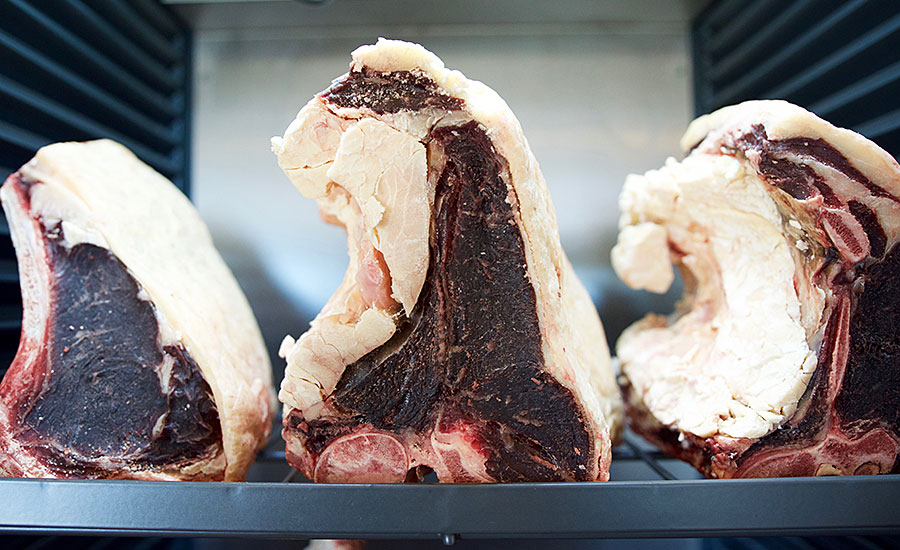Table Of Contents
Meat aging is a process that has been around since as early as the medieval period. Back then it was created as a way to preserve meat for longer periods of time using caves. As time went on and society developed, people began using their cellars to dry age meat. Further down the line when fridges were created, dry aging was no longer needed to preserve meat, however, people continued to dry age using fridges because of the benefits dry aging has on the taste and texture of meat.
What happens in the dry aging process?
As explained, meat aging originated back in the medieval times as a preservation method. Today it is used to naturally amplify the flavour of meat whilst simultaneously tenderising the texture to make it melt in the mouth. This all works through the process of controlled decomposition where the enzymes within the meat are slowly broken down over a long period of time in the correct environment. The right environment for dry aging should be cool and dry, ensuring the temperature and humidity levels are correct is crucial in preventing the meat from spoilage.
How long does dry aging take?
Ultimately, the process of dry aging is dependent on 3 key factors; the type of meat, the cut of meat and your preference. Beef is a meat that can be dry aged for significant periods of time, and the larger the cut, the longer it will take to dry age. Other meats such as pork or fish will not take nearly as long to dry age. Moreover, the time period you choose to dry age your meat is dependent on your personal preference when it comes to the taste. As time goes on, the flavours will only intensify. Here is what to expect from the length of time you choose to dry age meat:
30 days
The minimum time we recommend dry aging a steak is 30 days, this is because if you do it for less time than that, the process will not have started to make any noticeable impact to the taste or texture of the meat. After 30 days, you can expect the meat’s flavour to have begun to develop into that typical of dry aged beef. The beef should have also started to lose a significant amount of water weight which will make it significantly smaller in yield. This is because as the moisture is removed, the favours become more concentrated- described as rich, mushroom and umami.
45 days
If you really appreciate the effects of dry aging, we recommend aging your beef for around 45 days. At this point, the flavours will be significantly different to that of a normal (non dry aged) steak. The flavours will have developed to become more pungent giving off notes of blue cheese. The meat will also be extremely tender, the fat surrounding the meat will taste stronger than the rest of the meat in most cases.
90 days
If you are feeling particularly brave, why not push your dry aging to its limits and let the process evolve for 90 days. At this point, the steak will have developed a white crust which protects the meat inside and can be described as the rind of a cheese. This should be removed before eating the meat. The taste of the meat at this point is said to evoke bold notes of blue cheese with a funky undertone.
How to dry age meat
Now you know what dry aged meat is, what the process involves and how long it takes, you might be wondering how to get started with dry aging meat yourself. The best way to do this is using a dry aged refrigerator like the Steak Locker. This specially designed fridge has been developed specifically for dry aging. It includes smart features which allows you to track and monitor the progress of your meat and control the temperature and humidity levels, perfect for preventing spoilage and getting the most out of your meat.
It is possible to dry age using a standard fridge, but the risk of this is that it could cause a cross contamination of flavours where your milk could end up tasting like beef, or worse your beef could end up tasting like milk. Also, every time you open the fridge, you are changing the inside temperature and humidity levels which increases the risk of spoilage. Therefore we always recommend investing in a dry age fridge dedicated to your dry aging ventures.






